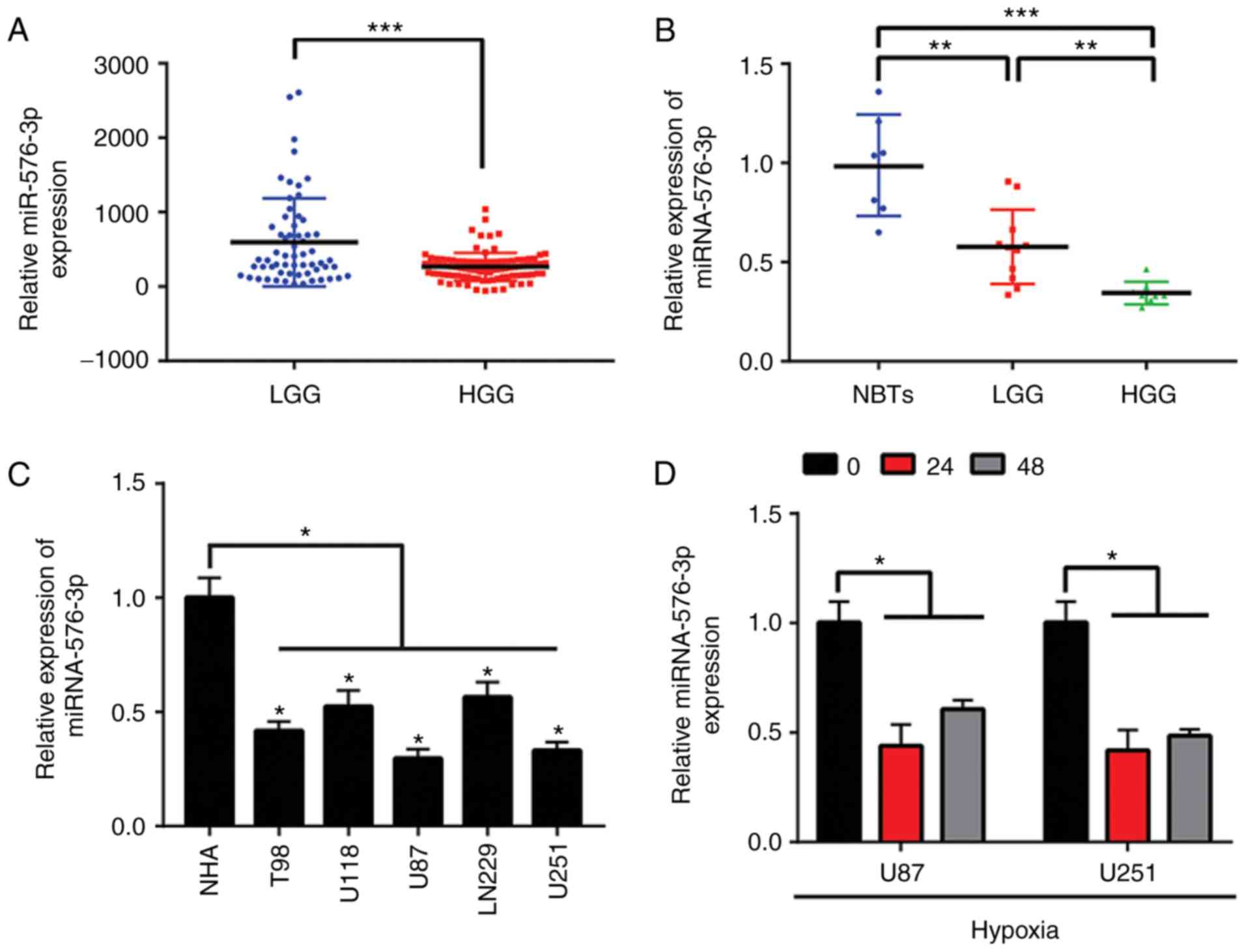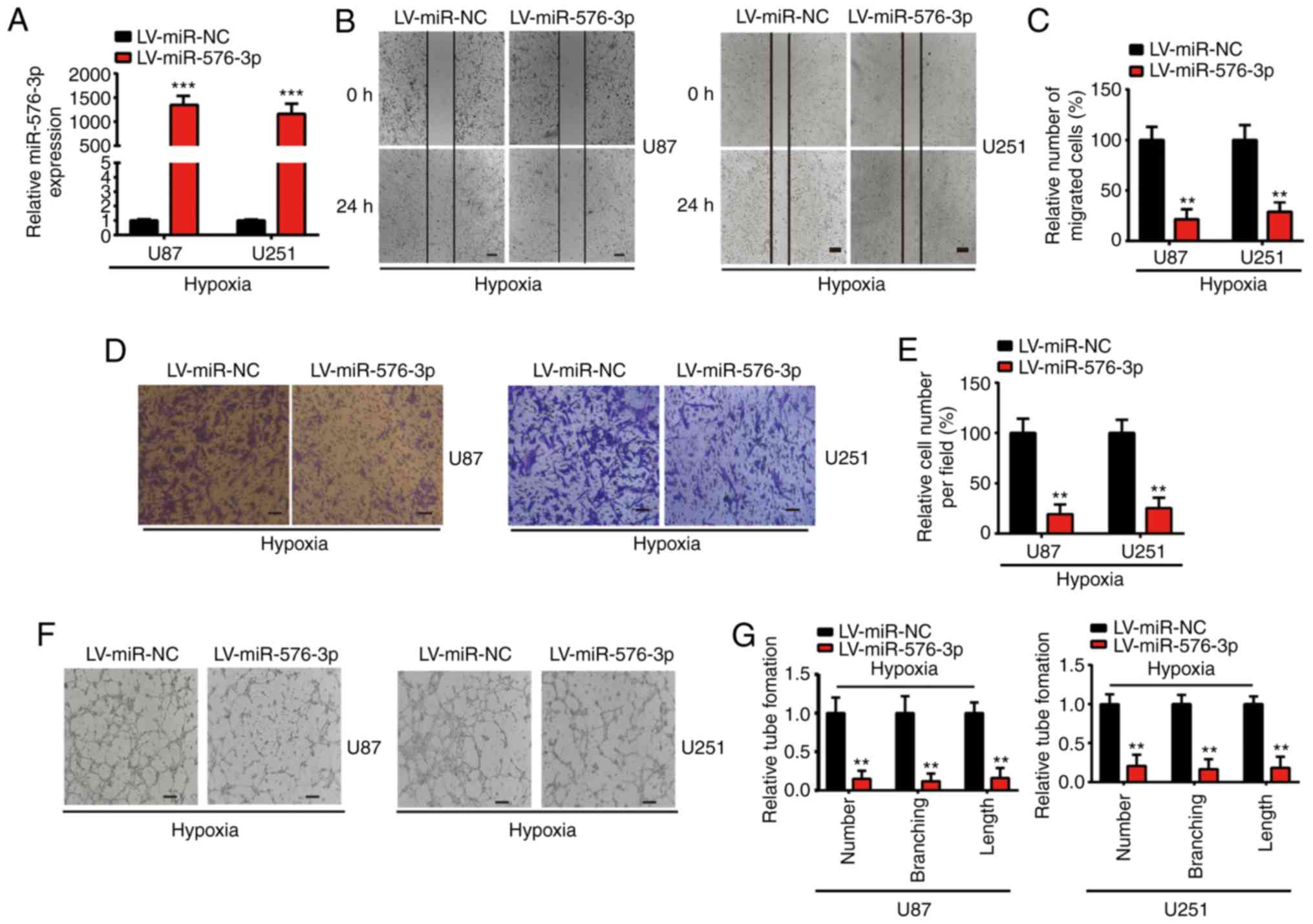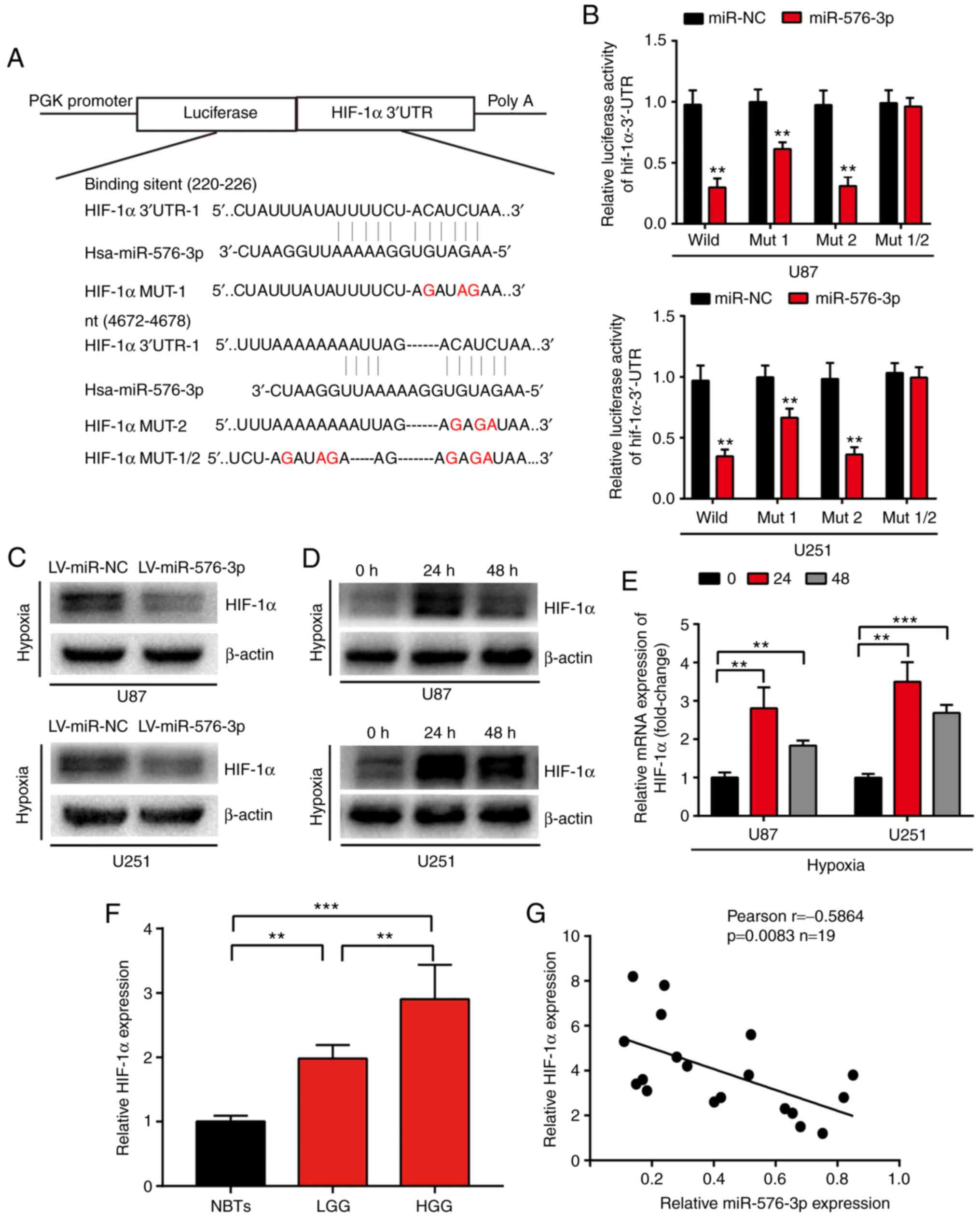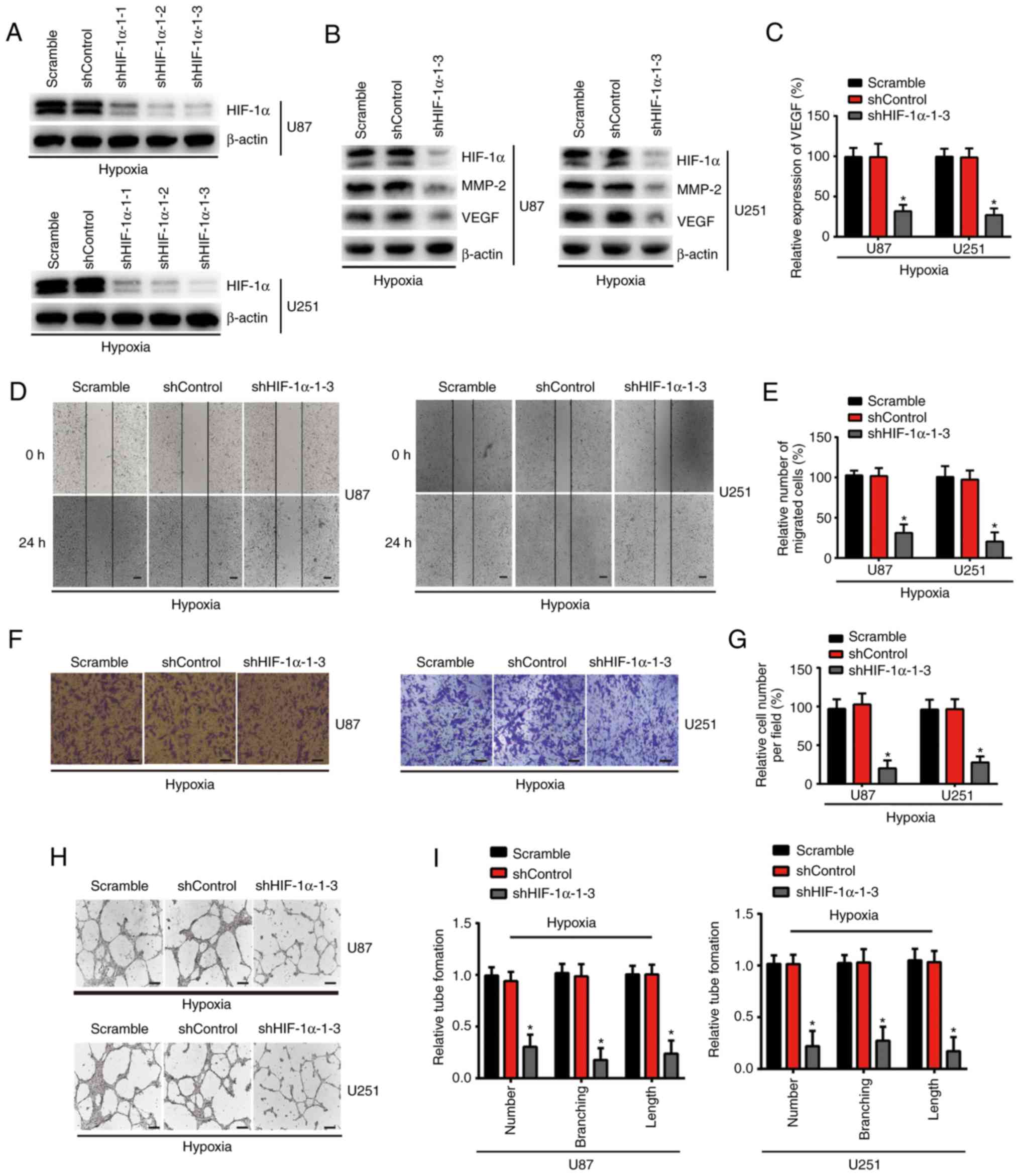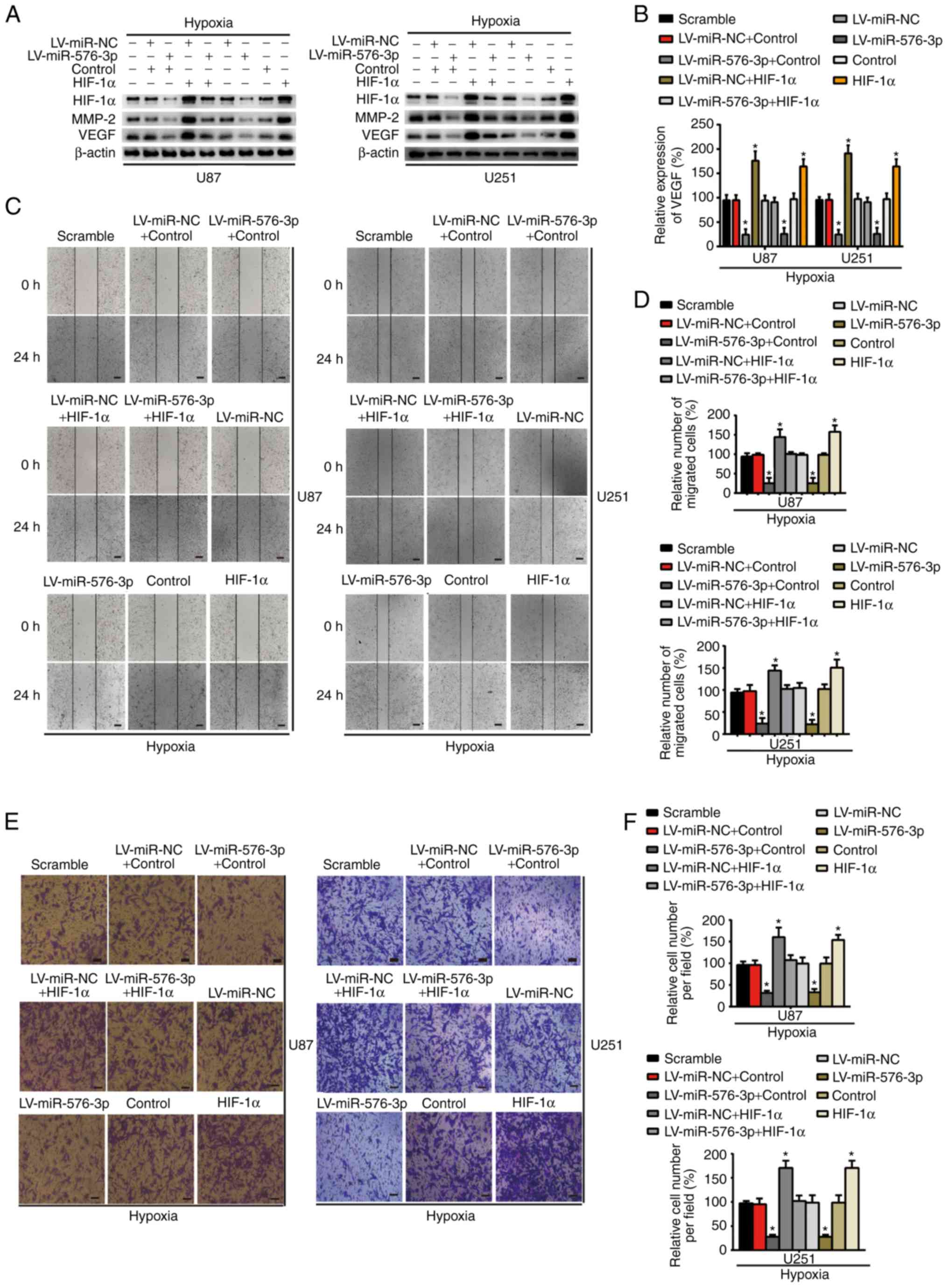|
1
|
Louis DN, Ohgaki H, Wiestler OD, Cavenee
WK, Burger PC, Jouvet A, Scheithauer BW and Kleihues P: The 2007
WHO classification of tumours of the central nervous system. Acta
Neuropathol. 114:97–109. 2007. View Article : Google Scholar : PubMed/NCBI
|
|
2
|
Stupp R, Mason WP, van den Bent MJ, Weller
M, Fisher B, Taphoorn MJ, Belanger K, Brandes AA, Marosi C, Bogdahn
U, et al: Radiotherapy plus concomitant and adjuvant temozolomide
for glioblastoma. N Engl J Med. 352:987–996. 2005. View Article : Google Scholar : PubMed/NCBI
|
|
3
|
Van Meir EG, Hadjipanayis CG, Norden AD,
Shu HK, Wen PY and Olson JJ: Exciting new advances in
neuro-oncology: The avenue to a cure for malignant glioma. CA
Cancer J Clin. 60:166–193. 2010. View Article : Google Scholar : PubMed/NCBI
|
|
4
|
Senger D, Cairncross JG and Forsyth PA:
Long-term survivors of glioblastoma: Statistical aberration or
important unrecognized molecular subtype. Cancer J. 9:214–221.
2003. View Article : Google Scholar : PubMed/NCBI
|
|
5
|
Brandes AA, Franceschi E, Gorlia T, Wick
W, Jacobs AH, Baumert BG, van den Bent M, Weller M and Stupp R;
European Organisation for Research and Treatment of Cancer Brain
Tumour Group: Appropriate end-points for right results in the age
of antiangiogenic agents: Future options for phase II trials in
patients with recurrent glioblastoma. Eur J Cancer. 48:896–903.
2012. View Article : Google Scholar
|
|
6
|
Hou LC, Veeravagu A, Hsu AR and Tse VC:
Recurrent glioblastoma multiforme: A review of natural history and
management options. Neurosurg Focus. 20:E52006. View Article : Google Scholar : PubMed/NCBI
|
|
7
|
Soda Y, Myskiw C, Rommel A and Verma IM:
Mechanisms of neovascularization and resistance to anti-angiogenic
therapies in glioblastoma multiforme. J Mol Med (Berl). 91:439–448.
2013. View Article : Google Scholar
|
|
8
|
Zagzag D, Zhong H, Scalzitti JM, Laughner
E, Simons JW and Semenza GL: Expression of hypoxia-inducible factor
1alpha in brain tumors: Association with angiogenesis, invasion,
and progression. Cancer. 88:2606–2618. 2000. View Article : Google Scholar : PubMed/NCBI
|
|
9
|
Kakudo N, Morimoto N, Ogawa T, Taketani S
and Kusumoto K: Hypoxia enhances proliferation of human
adipose-derived stem cells via HIF-1a activation. PLoS One.
10:e01398902015. View Article : Google Scholar
|
|
10
|
Bae WY, Choi JS, Kim JE and Jeong JW:
Cinnamic aldehyde suppresses hypoxia-induced angiogenesis via
inhibition of hypoxia-inducible factor-1α expression during tumor
progression. Biochem Pharmacol. 98:41–50. 2015. View Article : Google Scholar : PubMed/NCBI
|
|
11
|
Antica M, Kusic B, Hranilovic D, Dietz AB
and Vuk-Pavlovic S: Cloning the cDNA for murine U2 snRNP-A' gene
and its differential expression in lymphocyte development. Immunol
Lett. 82:217–223. 2002. View Article : Google Scholar : PubMed/NCBI
|
|
12
|
Li HS, Zhou YN, Li L, Li SF, Long D, Chen
XL, Zhang JB, Li YP and Feng L: WITHDRAWN: Mitochondrial targeting
of HIF-1α inhibits hypoxia-induced apoptosis independently of its
transcriptional activity. Free Radic Biol Med. 2018.
|
|
13
|
Ambros V: The functions of animal
microRNAs. Nature. 431:350–355. 2004. View Article : Google Scholar : PubMed/NCBI
|
|
14
|
Esquela-Kerscher A and Slack FJ:
Oncomirs-microRNAs with a role in cancer. Nat Rev Cancer.
6:259–269. 2006. View
Article : Google Scholar : PubMed/NCBI
|
|
15
|
Griffiths-Jones S, Saini HK, van Dongen S
and Enright AJ: miRBase: Tools for microRNA genomics. Nucleic Acids
Res. 36:D154–D158. 2008. View Article : Google Scholar :
|
|
16
|
Calin GA and Croce CM: MicroRNA signatures
in human cancers. Nat Rev Cancer. 6:857–866. 2006. View Article : Google Scholar : PubMed/NCBI
|
|
17
|
Shenouda SK and Alahari SK: MicroRNA
function in cancer: Oncogene or a tumor suppressor. Cancer
Metastasis Rev. 28:369–378. 2009. View Article : Google Scholar : PubMed/NCBI
|
|
18
|
Hossian AKMN, Sajib MS, Tullar PE, Mikelis
CM and Mattheolabakis G: Multipronged activity of combinatorial
miR-143 and miR-506 inhibits lung cancer cell cycle progression and
angiogenesis in vitro. Sci Rep. 8:104952018. View Article : Google Scholar : PubMed/NCBI
|
|
19
|
Wang Y, Ouyang M, Wang Q and Jian Z:
MicroRNA-142-3p inhibits hypoxia/reoxygenation-induced apoptosis
and fibrosis of cardiomyocytes by targeting high mobility group box
1. Int J Mol Med. 38:1377–1386. 2016. View Article : Google Scholar : PubMed/NCBI
|
|
20
|
Li L, Sun P, Zhang C, Li Z and Zhou W:
MiR-98 suppresses the effects of tumor-associated macrophages on
promoting migration and invasion of hepatocellular carcinoma cells
by regulating IL-10. Biochimie. 150:23–30. 2018. View Article : Google Scholar : PubMed/NCBI
|
|
21
|
Rainov NG and Heidecke V: Clinical
development of experimental therapies for malignant glioma. Sultan
Qaboos Univ Med J. 11:5–28. 2011.PubMed/NCBI
|
|
22
|
Livak KJ and Schmittgen TD: Analysis of
relative gene expression data using real-time quantitative PCR and
the 2(-Delta Delta C(T)) method. Methods. 25:402–408. 2001.
View Article : Google Scholar
|
|
23
|
Miletic H, Niclou SP, Johansson M and
Bjerkvig R: Anti-VEGF therapies for malignant glioma: Treatment
effects and escape mechanisms. Expert Opin Ther Targets.
13:455–468. 2009. View Article : Google Scholar : PubMed/NCBI
|
|
24
|
Cheng RF, Wang J, Zhang JY, Sun L, Zhao
YR, Qiu ZQ, Sun BC and Sun Y: MicroRNA-506 is up-regulated in the
development of pancreatic ductal adenocarcinoma and is associated
with attenuated disease progression. Chin J Cancer. 35:642016.
View Article : Google Scholar : PubMed/NCBI
|
|
25
|
Hong-Yuan W and Xiao-Ping C: miR-338-3p
suppresses epithelial-mesenchymal transition and metastasis in
human nonsmall cell lung cancer. Indian J Cancer. 52(Suppl 3):
E168–E171. 2015. View Article : Google Scholar
|
|
26
|
Wu JH, Wang YH, Wang W, Shen W, Sang YZ,
Liu L and Chen CM: MiR-18b suppresses high-glucose-induced
proliferation in HRECs by targeting IGF-1/IGF1R signaling pathways.
Int J Biochem Cell Biol. 73:41–52. 2016. View Article : Google Scholar : PubMed/NCBI
|
|
27
|
Zhou Y, Liu Y, Hu C and Jiang Y:
MicroRNA-16 inhibits the proliferation, migration and invasion of
glioma cells by targeting Sal-like protein 4. Int J Mol Med.
38:1768–1776. 2016. View Article : Google Scholar : PubMed/NCBI
|
|
28
|
Li Q, Zhou L, Wang M, Wang N, Li C, Wang J
and Qi L: MicroRNA-613 impedes the proliferation and invasion of
glioma cells by targeting cyclin-dependent kinase 14. Biomed
Pharmacother. 98:636–642. 2018. View Article : Google Scholar : PubMed/NCBI
|
|
29
|
Liang Z, Li S, Xu X, Xu X, Wang X, Wu J,
Zhu Y, Hu Z, Lin Y, Mao Y, et al: MicroRNA-576-3p inhibits
proliferation in bladder cancer cells by targeting cyclin D1. Mol
Cells. 38:130–137. 2015. View Article : Google Scholar : PubMed/NCBI
|
|
30
|
Xia Lv J, Xu K, Sun P, Ma E, Gao J, Zhou
S, Zhang Q, Wang M, Chen FF, et al: miRNA expression patterns in
chemoresistant breast cancer tissues. Biomed Pharmacother.
68:935–942. 2014. View Article : Google Scholar : PubMed/NCBI
|
|
31
|
Sun B, Zhang D, Zhang S, Zhang W, Guo H
and Zhao X: Hypoxia influences vasculogenic mimicry channel
formation and tumor invasion-related protein expression in
melanoma. Cancer Lett. 249:188–197. 2007. View Article : Google Scholar
|
|
32
|
Liao D and Johnson RS: Hypoxia: A key
regulator of angiogenesis in cancer. Cancer Metastasis Rev.
26:281–290. 2007. View Article : Google Scholar : PubMed/NCBI
|
|
33
|
Wang GL, Jiang BH, Rue EA and Semenza GL:
Hypoxia-inducible factor 1 is a basic-helix-loop-helix-PAS
heterodimer regulated by cellular O2 tension. Proc Natl Acad Sci
USA. 92:5510–5514. 1995. View Article : Google Scholar : PubMed/NCBI
|
|
34
|
Huang LE, Gu J, Schau M and Bunn HF:
Regulation of hypoxia-inducible factor 1alpha is mediated by an
O2-dependent degradation domain via the ubiquitin-proteasome
pathway. Proc Natl Acad Sci USA. 95:7987–7992. 1998. View Article : Google Scholar : PubMed/NCBI
|
|
35
|
Semenza GL: Targeting HIF-1 for cancer
therapy. Nat Rev Cancer. 3:721–732. 2003. View Article : Google Scholar : PubMed/NCBI
|
|
36
|
Papandreou I, Cairns RA, Fontana L, Lim AL
and Denko NC: HIF-1 mediates adaptation to hypoxia by actively
downregulating mitochondrial oxygen consumption. Cell Metab.
3:187–197. 2006. View Article : Google Scholar : PubMed/NCBI
|
|
37
|
Liu X, Chen S, Tu J, Cai W and Xu Q: HSP90
inhibits apoptosis and promotes growth by regulating HIF-1α
abundance in hepatocellular carcinoma. Int J Mol Med. 37:825–835.
2016. View Article : Google Scholar : PubMed/NCBI
|
|
38
|
Shiau AL, Shen YT, Hsieh JL, Wu CL and Lee
CH: Scutellaria barbata inhibits angiogenesis through
downregulation of HIF-1 α in lung tumor. Environ Toxicol.
29:363–370. 2014. View Article : Google Scholar
|
|
39
|
Tang JH, Ma ZX, Huang GH, Xu QF, Xiang Y,
Li N, Sidlauskas K, Zhang EE and Lv SQ: Downregulation of HIF-1a
sensitizes U251 glioma cells to the temozolomide (TMZ) treatment.
Exp Cell Res. 343:148–158. 2016. View Article : Google Scholar : PubMed/NCBI
|
|
40
|
Shi H, Zheng B, Wu Y, Tang Y, Wang L, Gao
Y, Gong H, Du J and Yu R: Ubiquitin ligase Siah1 promotes the
migration and invasion of human glioma cells by regulating HIF-1α
signaling under hypoxia. Oncol Rep. 33:1185–1190. 2015. View Article : Google Scholar : PubMed/NCBI
|
|
41
|
Cui H, Wang Y, Huang H, Yu W, Bai M, Zhang
L, Bryan BA, Wang Y, Luo J, Li D, et al: GPR126 protein regulates
developmental and pathological angiogenesis through modulation of
VEGFR2 receptor signaling. J Biol Chem. 289:34871–34885. 2014.
View Article : Google Scholar : PubMed/NCBI
|
|
42
|
Gupta B, Chiang L, Chae K and Lee DH:
Phenethyl isothiocyanate inhibits hypoxia-induced accumulation of
HIF-1α and VEGF expression in human glioma cells. Food Chem.
141:1841–1846. 2013. View Article : Google Scholar : PubMed/NCBI
|
|
43
|
Takano S, Yoshii Y, Kondo S, Suzuki H,
Maruno T, Shirai S and Nose T: Concentration of vascular
endothelial growth factor in the serum and tumor tissue of brain
tumor patients. Cancer Res. 56:2185–2190. 1999.
|
|
44
|
Forsythe JA, Jiang BH, Iyer NV, Agani F,
Leung SW, Koos RD and Semenza GL: Activation of vascular
endothelial growth factor gene transcription by hypoxia-inducible
factor 1. Mol Cell Biol. 16:4604–4613. 1996. View Article : Google Scholar : PubMed/NCBI
|
|
45
|
Osenkowski P, Toth M and Fridman R:
Processing, shedding, and endocytosis of membrane type 1-matrix
metalloproteinase (MT1-MMP). J Cell Physiol. 200:2–10. 2004.
View Article : Google Scholar : PubMed/NCBI
|
|
46
|
Schenk S, Hintermann E, Bilban M,
Koshikawa N, Hojilla C, Khokha R and Quaranta V: Binding to EGF
receptor of a laminin-5 EGF-like fragment liberated during
MMP-dependent mammary gland involution. J Cell Biol. 161:197–209.
2003. View Article : Google Scholar : PubMed/NCBI
|
|
47
|
Fujiwara S, Nakagawa K, Harada H, Nagato
S, Furukawa K, Teraoka M, Seno T, Oka K, Iwata S and Ohnishi T:
Silencing hypoxia-inducible factor-1alpha inhibits cell migration
and invasion under hypoxic environment in malignant gliomas. Int J
Oncol. 30:793–802. 2007.PubMed/NCBI
|















